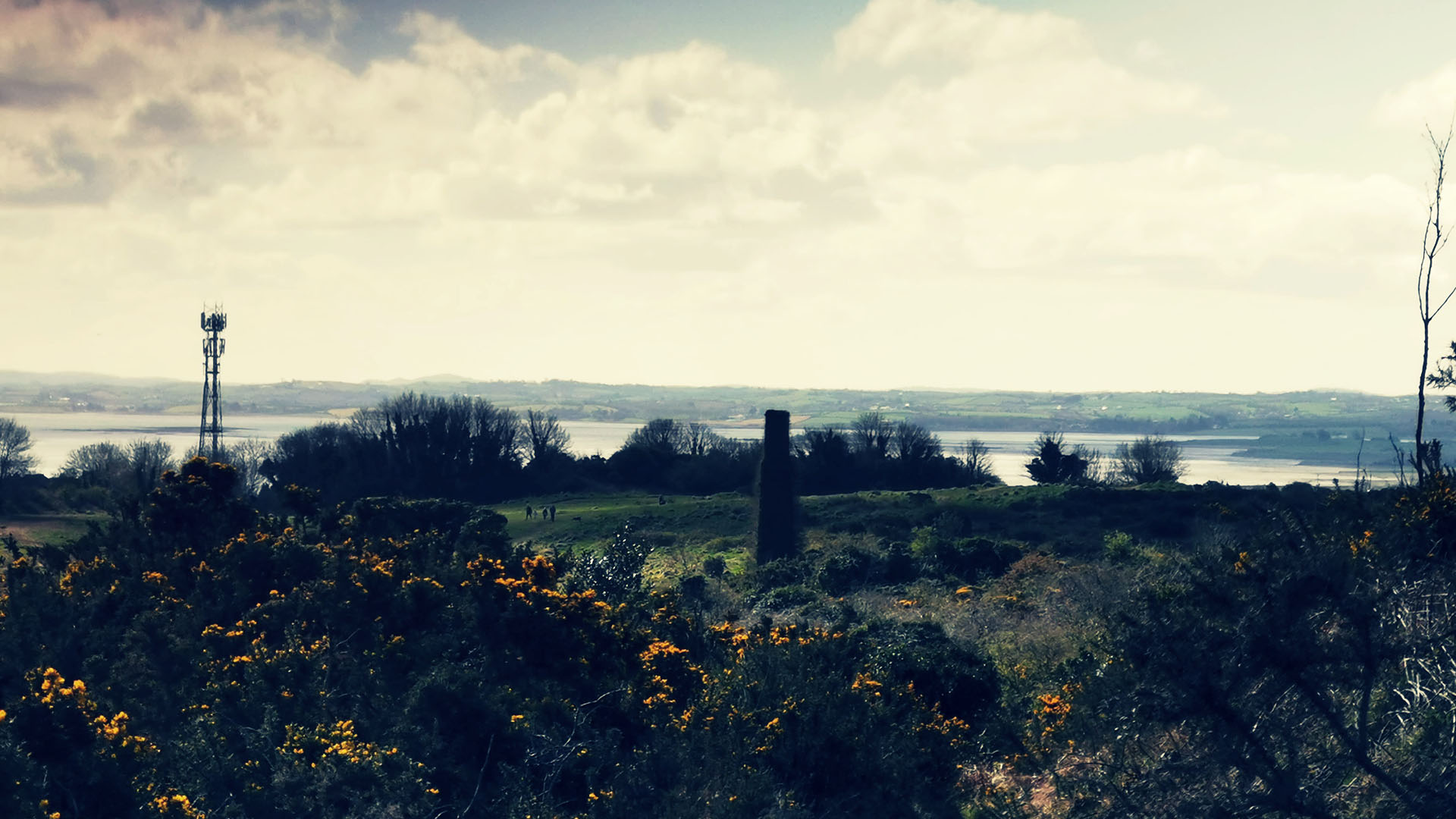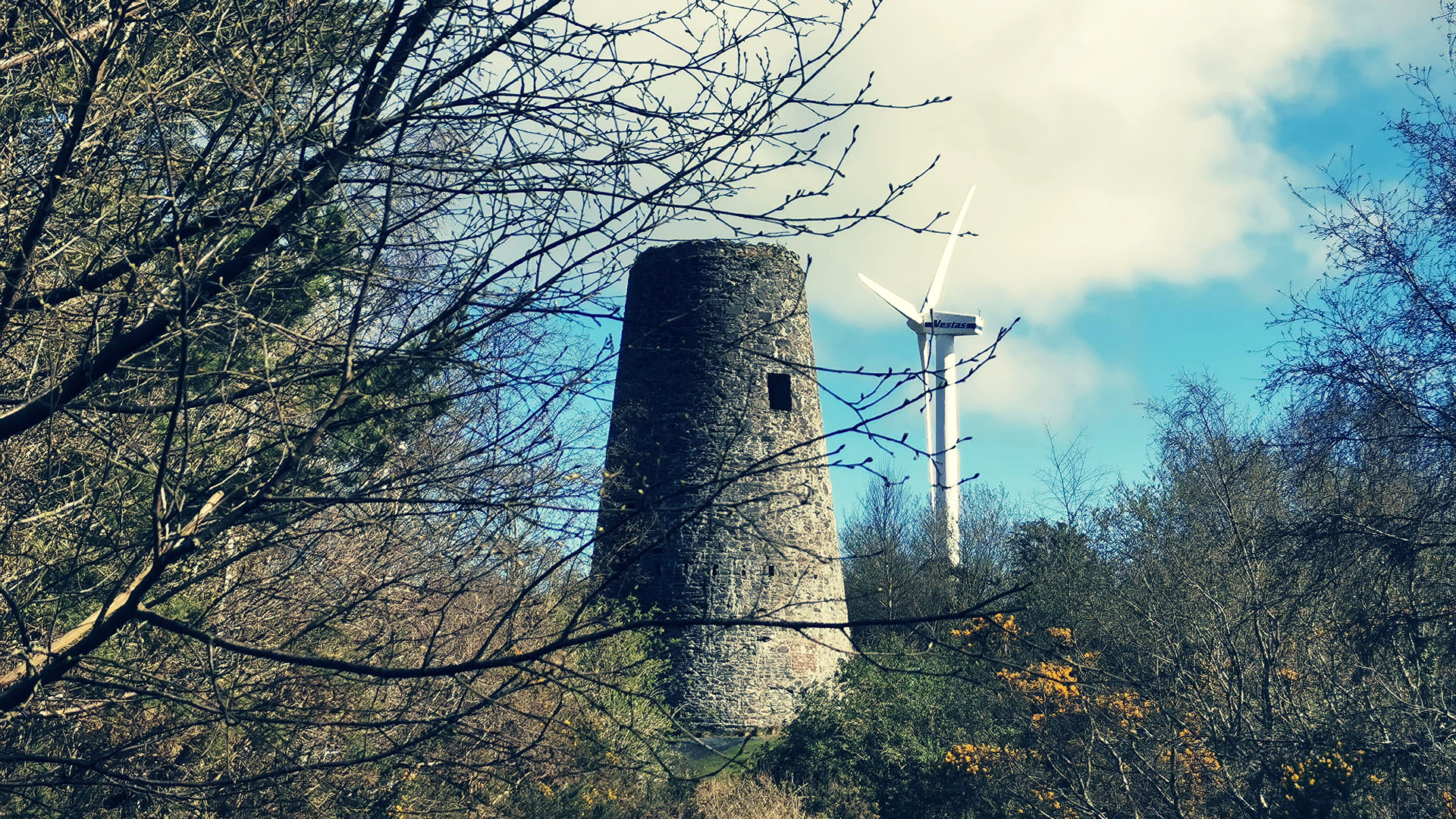The Whitespots Leadmines lie near the village of Conlig, between the towns of Bangor and Newtownards in Co. Down. The mines run along the edge of the Clandeboye Estate. The Estate served as a training camp for 36th (Ulster) Division prior to The Great War and is now home to the Somme Museum.
During the early years of the 19th century, mining of around 15,000 tons of refined lead, as well as small quantities of copper and silver took place. Mining was at its peak between 1849-1864, before coming to an end in 1910.
The area became Whitespots Country Park in 1995 and has been in the process of developing ever since. Today, the area is a designated Area of Special Scientific Interest, and reminders of the extensive mining projects remain.
Motorcycle Trials
On Sunday 6th April 1941, the British Army staged their largest motorcycle reliability trials to date at Whitespots Leadmines, Co. Down. During the event, riders from several units of the British Army took part. Mr. R.H. White (President of the Ulster Centre of the Motorcycle Union of Ireland) helped organise the event. Instructors were all known members of the Irish club all engaged on war work.
A total of 70 riders took part in the event, split into 20 teams of 3 plus 10 individual winners of previous trials. They received one demonstration run over the course before the competition began. Several thousand military and civilian spectators lined the route to observe the spectacle.
The 1-mile track simulated many of the hazards riders would face in wartime. The course began with a steep climb through mud almost a foot deep. This lead to a further steep gradient where large rocks broke through the slippery surface. A section of muddy grass followed with a sharp left hand turn. Riders then descended a steep downward gradient with left and right turns over muddy grass and loose gravel.
The biggest challenge was a snaking lane through axle-deep slush before climbing over a steep bank of loose quarry chippings. Organisers thought the obstacle to best simulate the climb from a shell crater on a battlefield. The second most challenging obstacle was a water splash with a steep stony approach. The event took in 3 laps of the testing track.
Gleefully they piloted their machines over every obstacle and seemed to revel in the mud-larking. One of the most noticeable features was the variety of garbs chosen by the entrants. Some were attired in the best Grand Prix style, crash helmets and all complete; others were more appropriately dressed for a hunt, while several splashed nonchalantly through the water hazard in battle dress.
Belfast Telegraph – 7th April 1941.
There were problems on the day for organisers. A detachment of the Auxiliary Fire Service needed to pump water from a nearby pond to the water splash, which had dried out somewhat. The largest problem for riders was the hill-climb. The majority of riders fell here much to the delight of spectators. One who failed the hill climb was a well-known wall-of-death rider.
Major General B.T. Wilson C.B., D.S.O., deputising for Lieutenant-General Sir Henry Pownall, presented medals to the winners and stated the importance of gaining experience of motorcycling of such terrain.
Winning Team:
Lance Corporal D.B. Dobson, Signalman Harry Plews, and Signalman J.J. Whiteside.
Runners Up:
Sergeant T.S. Boyland, Lance Corporal H. James, and Sergeant W.K. Hammond.
Eliminating Trials Winners:
Lance Corporal S.J. Hufton, Signalman S.J.E. Lane, and Signalman W.W. Davis.
Sergeant G.P. Oliver, Sergeant W. Handley, and Driver W.G. Saunders.
Sergeant C.R.E. Milton, Lance Corporal L.J. Cornelius, and Lance Corporal F. Eddy.
Individual Championship of Northern Ireland:
Sergeant G.P. Oliver.
Trials continue at Whitespots
Much as it was in 1941, the area around the Whitespots Leadmines is today used for motorcycle trials run by Moto Trial NI and Ards and North Down Borough Council. The terrain is still testing for even the best competitors, and has hosted European Trials Championships in the 1960s, and the first-ever World Championship Trial in the 1970s.

